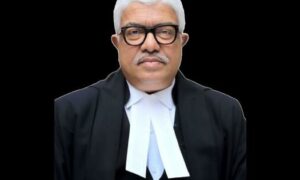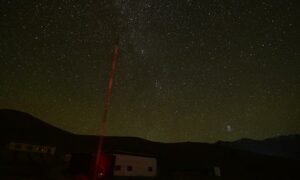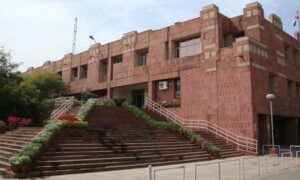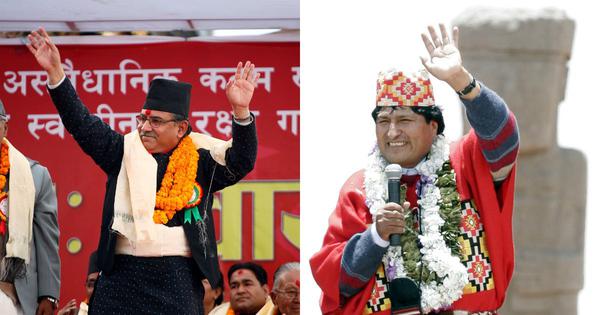
Bolivia and Nepal stand out as improbable sites of radical transformation. Landlocked and mountainous, on opposite ends of the planet yet linked by parallels of geography and history, they are the great republics of the Andes and the Himalayas. In both countries, large indigenous majorities had for centuries been ruled over by minority elites: the Creole, landowning oligarchies that monopolised Bolivian wealth after independence, and the high-caste Hindu aristocracy that had entrenched monarchy and Hindu nationalism in Nepal.
In the first decade of the 21st century, both countries experienced revolutions that overturned these ancien régimes. In 2006, Evo Morales, the son of llama herders and a leader of the coca growers’ union, became Bolivia’s first indigenous president.
Two years later, in 2008, Nepal abolished its monarchy and declared itself a republic after a 10-year Maoist insurgency and the great urban uprisings of 2006. Each process produced a new constitution – Bolivia’s in 2009 and Nepal’s in 2015 – promising inclusion, redistribution and a radically new politics rooted in the voice of the long-persecuted majority.
For a time, both appeared to have inaugurated enduring new orders. Yet almost in unison, both collapsed in 2025. Morales’s Movement Toward Socialism, once the most successful leftist party in the Americas, broke apart in factionalism and presided over a deepening economic crisis, culminating in crushing electoral defeat this August.
In Nepal, the Maoist-led republican order dissolved into factional paralysis, economic despair and mass disillusionment, reaching its breaking point on September 9. Power went back, in anticlimactic fashion, to the same Creole elites in Bolivia and to the Nepali army against whom the revolution had been launched decades ago.
Their twin collapses close one chapter – but also highlight the continuing need for economic sustainability and political unity if progressive politics anywhere is to survive the combined pressures of fragmentation, great power interference and hostile elites.
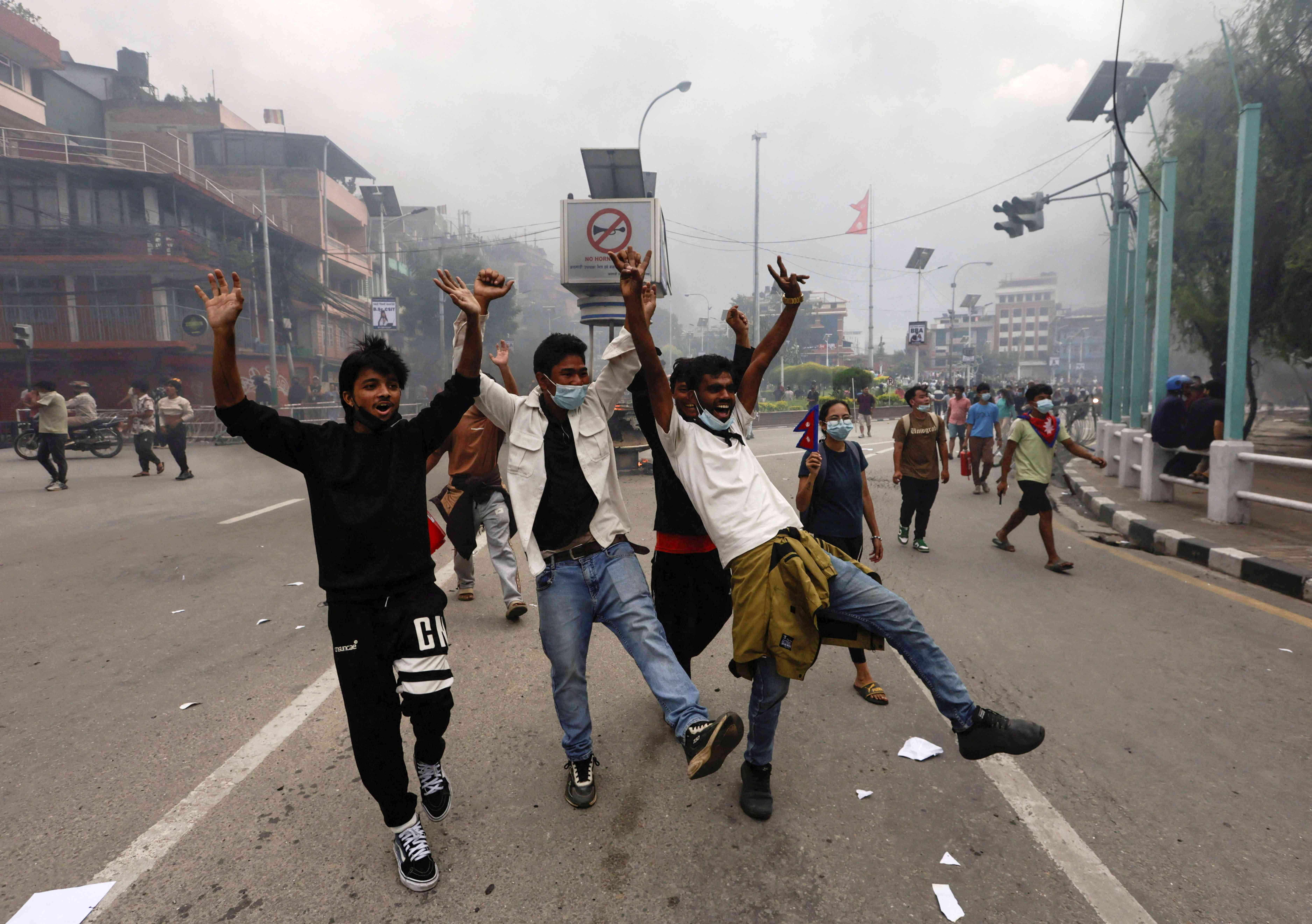
Indigenous breakthrough to dollar crisis
The Bolivian revolution was born in fire. Between 2000 and 2004, waves of uprisings shook the country as miners, peasants, indigenous communities and urban workers resisted the privatisation of natural gas and water. The “Gas War” of 2003, in which the military opened fire on unarmed demonstrators in El Alto, left dozens dead but forced the resignation of neoliberal president Gonzalo “Goni” Sánchez de Lozada.
Out of this cauldron emerged Evo Morales and his party, the Movimiento al Socialismo, a coalition of coca growers, campesino (indigenous) unions and indigenous organisations. In 2005, Morales swept to power with a commanding majority, declaring from the ancient ruins of Tiwanaku in January 2006: “For the first time in Bolivian history, Aymaras, Quechuas and Mojeños, we are presidents.”
The achievements of Morales’s early years were undeniable. A partial nationalisation of hydrocarbons allowed the state to capture windfall revenues from the global commodity boom. Between 2006 and 2014, Bolivia’s gross domestic product tripled, extreme poverty fell from 38% percent to 17% and inequality declined at one of the fastest rates in the hemisphere. Social programmes in education and health, combined with cash transfers, brought tangible benefits to millions of poor families.
The 2009 constitution proclaimed Bolivia a plurinational state, granting recognition to 36 indigenous languages and formally enshrining indigenous autonomy. In 2010, the Law of Pachamama (Mother Earth) gave nature legal rights, a symbolic assertion of Andean cosmology on the world stage. Morales’s Bolivia became an emblem of indigenous empowerment and socialist possibility, a beacon of the continent’s “Pink Tide”.
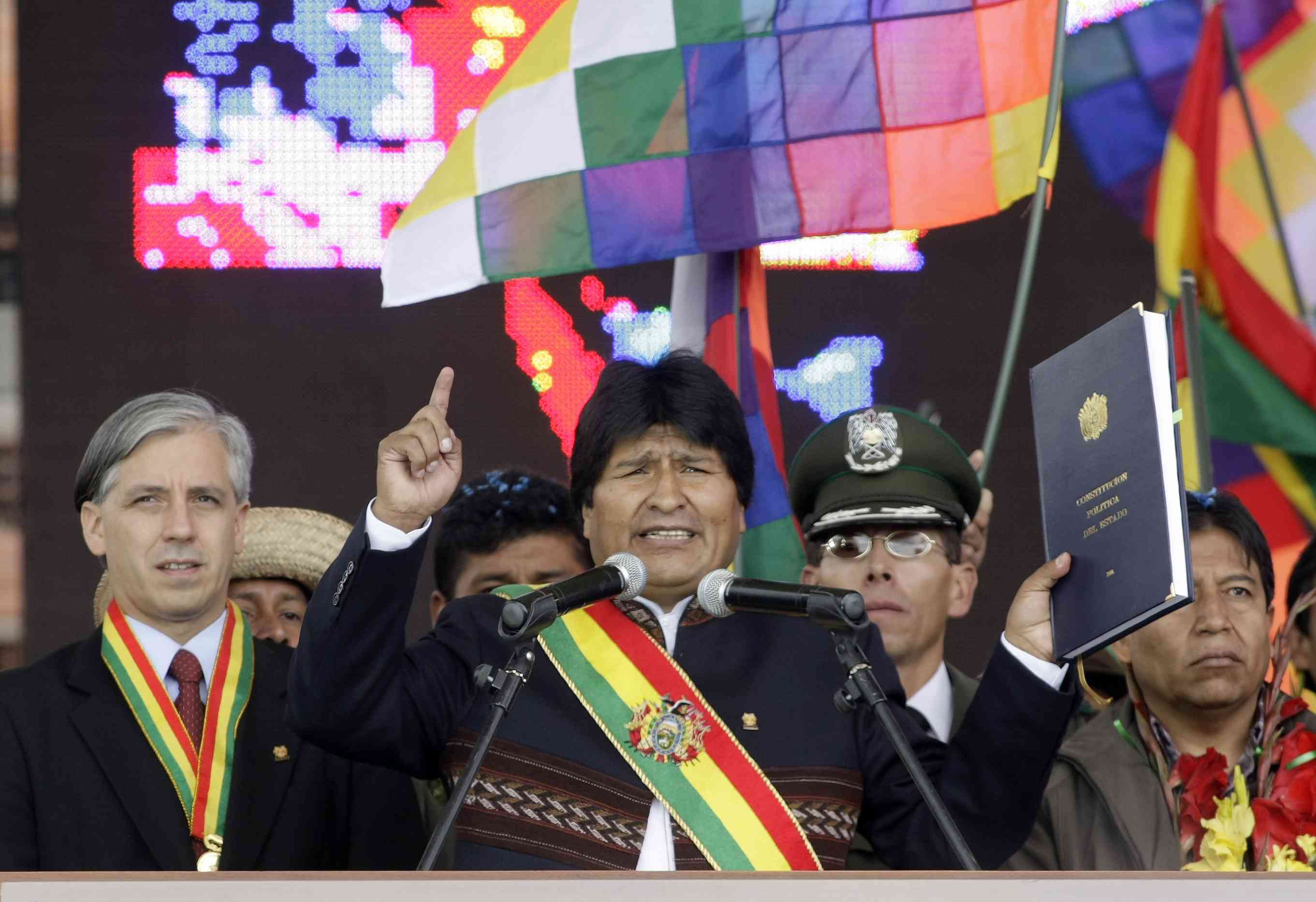
But contradictions were present from the start. The model was heavily dependent on hydrocarbons and the commitment to extractivism soon clashed with the government’s discourse of indigenous sovereignty and environmental protection. In 2011, the Morales administration proposed building a highway through the Isiboro Sécure Indigenous Territory and National Park. Indigenous communities mobilised to defend their land, sparking a national outcry when police violently repressed their march. Morales admitted the project was a mistake, but the episode revealed fault lines between his coca grower base and indigenous groups defending the Amazon.
At the same time, the Morales’s Movement Toward Socialism party entered a pragmatic rapprochement with agribusiness elites in Santa Cruz, opening new land for soy, beef, and biofuel expansion – policies that drove deforestation even as the government spoke of Pachamama and harmony with nature.
Another contradiction lay in Morales’s relationship to power. The 2009 constitution limited presidents to two terms, but Morales argued that his first did not count because it preceded the new charter. He won a re-election in 2014 but, in 2016, lost a referendum to allow a further run. Instead of stepping aside, the constitutional court – stacked with party loyalists – ruled that term limits violated his human rights.
When Morales ran again in 2019 and won narrowly, the opposition cried fraud. A premature report by the Organization of American States fuelled the fire, and after weeks of protest and police mutinies, Morales resigned under military pressure. He called it a US-led coup; the unconstitutional far-right interim government that followed, marked by severe repression, far-right bigotry and massacres in Senkata and Sacaba, seemed to confirm his claim. The Movimiento al Socialismo returned to power in dramatic fashion in the 2020 election under Luis Arce, Morales’ former finance minister.
Yet restored leftist unity proved fleeting. Morales and Arce soon fell into open rivalry, each vying for control of the party and to be its presidential candidate in 2025. The once-mighty party fractured into evistas and arcistas, paralysing the legislature and splitting the unions and grassroots organisations that had been its strength. At the very moment unity was needed, Bolivia entered its gravest economic crisis in decades.
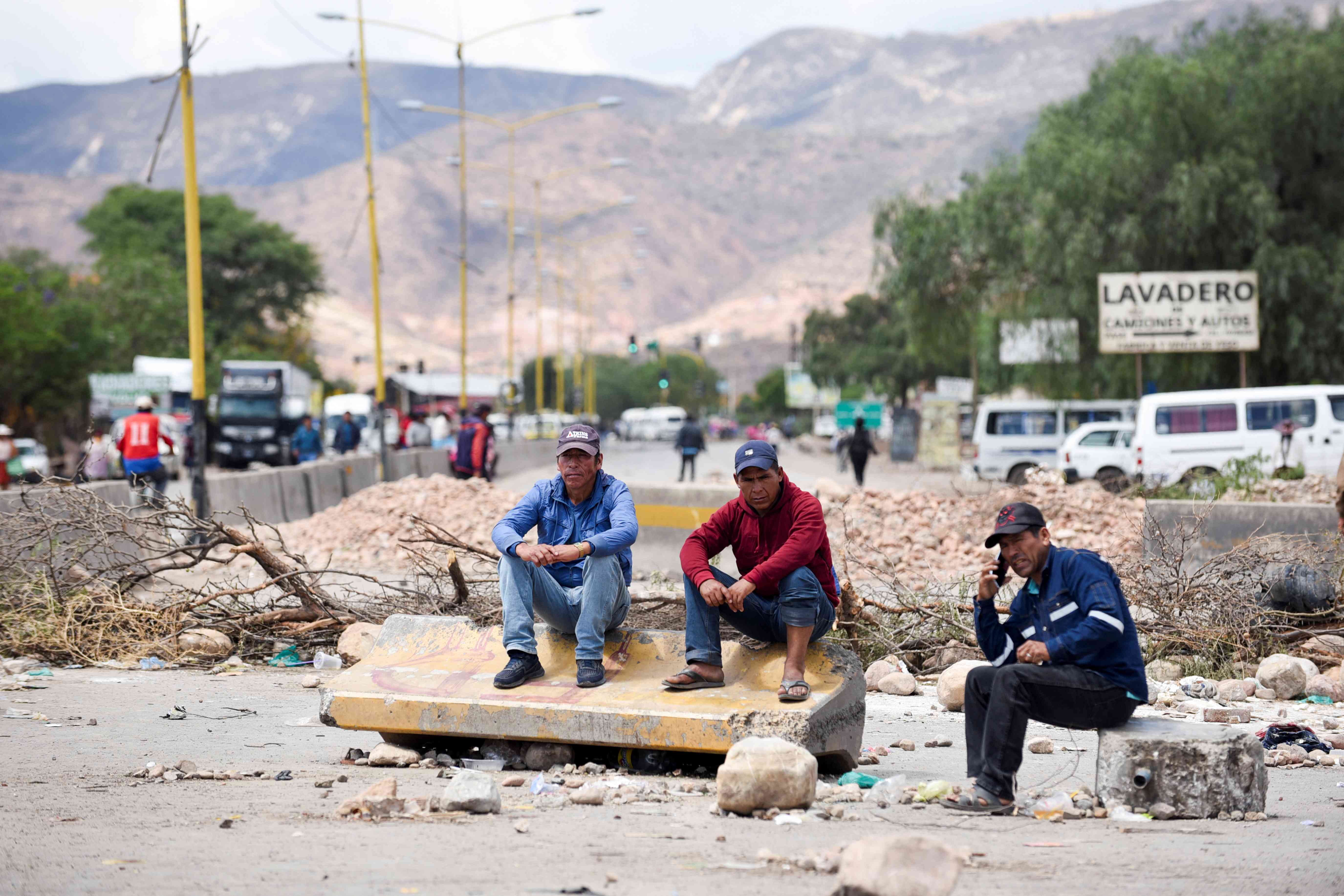
The heart of the crisis was dollars. Bolivia’s international reserves, which had peaked at $15.5 billion in 2014, fell to just $1.7 billion by 2023 as natural gas exports collapsed. Production had been mismanaged for years, and with no new discoveries, revenues dwindled. Without dollars, the government struggled to pay for imports of fuel, medicine and basic goods. An unofficial black-market rate soared above the official one, inflation crept upward despite subsidies and fuel shortages became chronic. Ratings agencies downgraded Bolivian bonds to junk. Loans worth over $1 billion from multilateral lenders languished in the legislature as Morales’s allies blocked approval to weaken Arce. Political paralysis delayed enabling laws for lithium projects despite deals with Chinese and Russian firms.
For ordinary Bolivians, the crisis was palpable: lines at petrol pumps, empty pharmacies and soaring costs. Morales pointed to the shortages as proof of Arce’s incompetence and promised a return to the “good times.” Arce accused Morales of sabotaging the country for his personal ambition. By 2025, strikes, protests, and factional blockades multiplied, and MaS’ historic coalition disintegrated. In August, the socialist experiment once hailed as the most successful in the Americas collapsed under the weight of infighting and economic breakdown.
People’s War to Republican Constitution
If Bolivia’s revolution was born of the “Gas War”, Nepal’s grew from a decade of armed insurgency. Between 1996 and 2006, the Communist Party of Nepal (Maoist) waged a “People’s War” against the monarchy and its feudal order, mobilising peasants, Dalits, indigenous Janajatis and women in a struggle that reached nearly every village. By 2006, mass urban uprisings and a ceasefire brought the Maoists into mainstream politics. The Comprehensive Peace Accord ended the war, and systems were put in place for a Constituent Assembly to draft a bold new constitution.
The monarchy, which had ruled for 240 years and claimed divine authority as a Hindu institution, was abolished in 2008. The new Nepal declared itself a secular, federal republic. Seven years later, in 2015, the country’s first truly representative constitution was promulgated. This was the founding charter of the new order: republican, federal, secular and progressive. It promised inclusion after centuries of exclusion, not only for the hill high-caste elites but for the Madheshis, the Tharus, the Janajatis, Muslims, Dalits, and women.
The 2015 Constitution enshrined fundamental rights expansively. Article 38 guaranteed women’s rights from the outset; Article 84 mandated at least 33% of parliamentary seats be reserved for women, while the National Assembly guaranteed women’s representation in every province. Nepal even legalised same-sex marriage in 2024, something even India failed to achieve in October 2023.
The new republic also delivered measurable social progress. By 2020, child mortality had fallen by 66% and maternal deaths by 80% compared to the 1990s. Literacy expanded, and poverty declined. International observers hailed Nepal as an unlikely but inspiring example of how a poor, landlocked country could achieve human development goals through political will and grassroots mobilisation.
But fractures never healed. The Madheshi community protested constitutional provisions on boundaries, representation, and citizenship, leading in 2015 to deadly clashes and an Indian blockade. Though amended, distrust lingered. Many felt republican Nepal remained dominated by the same high-caste elites, now in revolutionary garb.
The Maoists fragmented, federalism was slow and partial and land reform stalled. By the 2020s, youth unemployment soared to 30%. Labour migration surged, remittances kept the economy afloat, but socialist transformation faltered. Kathmandu’s politics became notorious for bargaining, backroom deals and corruption. Former guerrilla commanders fought bitterly. By 2025, economic downturn and disillusionment drove Nepal’s republican order into paralysis. In 17 years, Nepalis had seen 15 distinct prime ministerial terms, and the country’s Gen Z had had enough.
Shared lessons
The simultaneity of Bolivia and Nepal’s breakdowns is striking. The collapse of these two mountain republics show that transformative politics needs more than constitutional promises and identity recognition. It requires sustainable economies and durable unity.
These lessons extend far beyond Bolivia and Nepal, to democracies worldwide where revolutionary forces must balance ideals with unity and governance. Without these, progressive projects risk repeating the cycle: triumph, fragmentation, collapse.
Sahasranshu Dash is a research associate at the International Centre for Applied Ethics and Public Affairs at Sheffield in the United Kingdom.
📰 Crime Today News is proudly sponsored by DRYFRUIT & CO – A Brand by eFabby Global LLC
Design & Developed by Yes Mom Hosting


